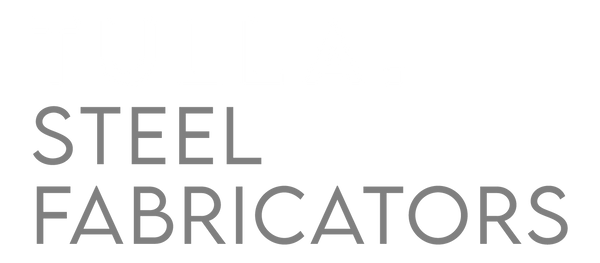The Future of Steel Fabrication: What’s Next for Melbourne’s Steel Industry?
Share
The future of steel fabrication is being shaped by rapid technological advancements, shifting market demands, and the increasing push for sustainability. With Melbourne playing a key role in Australia’s construction and manufacturing sectors, staying ahead of these steel fabrication industry trends is essential for businesses looking to remain competitive.
From automation in steel fabrication to AI-driven production and sustainable practices, the industry is evolving in ways that will impact fabricators, suppliers, and builders alike. Here’s what to expect in the coming years.
Innovation is Reshaping Steel Fabrication
Technology continues to revolutionise how steel is cut, welded, and assembled. As fabrication processes become more advanced, businesses are turning to automation, robotics, and digital modelling to improve efficiency, reduce waste, and enhance precision.
Automation and AI in Steel Manufacturing
The rise of AI in steel manufacturing is streamlining production like never before. Smart systems can now monitor fabrication in real-time, predict maintenance issues, and detect quality inconsistencies before they become costly problems.
Meanwhile, robotic welding and automated cutting systems are making steel fabrication faster and more precise, reducing human error and improving workplace safety. As these technologies become more refined, Melbourne fabricators will need to adopt them to remain competitive.
Digital Modelling and 3D Printing
Building Information Modelling (BIM) and Computer-Aided Design (CAD) are now industry standards, helping steel fabricators visualise projects before production begins. These digital tools reduce material waste, improve design accuracy, and allow for seamless collaboration between engineers, architects, and manufacturers.
Additionally, 3D printing is beginning to influence technological advancements in steel fabrication, enabling the creation of complex steel components with minimal waste. While large-scale applications are still in development, the potential for 3D printing in steel fabrication is growing.
For more insights into how digital tools are transforming the industry, explore emerging trends in fabrication technology.
Sustainability and the Shift Towards Green Steel
As demand for greener building materials rises, steel fabricators are making sustainability a priority. From low-carbon and recycled steel to energy-efficient production, Melbourne is seeing a shift towards more eco-friendly manufacturing.
Recycled and Low-Carbon Steel
Recycling plays a key role in the future of steel fabrication, with many manufacturers repurposing offcuts and using recycled steel to reduce reliance on newly mined raw materials. This approach lowers emissions while keeping high-quality steel in circulation.
Energy-Efficient Fabrication
Fabricators are also investing in energy-efficient furnaces, heat recovery systems, and renewable energy sources to cut emissions and operating costs. With government incentives encouraging greener manufacturing processes, Melbourne steel industry trends are shifting towards more sustainable production methods.
By adopting eco-friendly practices, fabricators can meet evolving regulations, reduce costs, and build a more sustainable future. Learn more about how sustainability efforts are influencing quality control in steel fabrication.
Challenges and Opportunities for Melbourne’s Steel Industry
While the industry is advancing, it also faces challenges that will require adaptation and innovation.
Workforce Skill Gaps and Training Needs
As technological advancements in steel fabrication increase, so does the need for skilled workers who can operate AI-driven systems, automation tools, and digital design software. Investing in workforce training and development will be crucial for businesses looking to keep up with modern fabrication processes.
Supply Chain Disruptions and Material Availability
The past few years have shown how supply chain disruptions can impact production timelines and material costs. By sourcing steel locally and expanding recycling efforts, Melbourne fabricators can reduce their reliance on international suppliers and stabilise their operations.
Growth in Construction and Infrastructure
Melbourne’s growing construction industry offers considerable demand for quality fabricated steel despite some challenges. As major infrastructure projects emerge, fabricators who adopt new technologies and leverage sustainability efforts should be well-positioned for growth.
Where is Melbourne’s Steel Industry Headed?
The future of steel fabrication in Melbourne will be shaped by several emerging trends and technologies. Automation and AI will change the steel fabrication industry by increasing efficiency, lowering costs, and improving manufacturing quality. Smart systems will help companies identify defects at an early stage, optimise workflows and reduce material waste. Such developments will automate production processes, as well as provide enhancements to workplace safety by eliminating the need for manual involvement in hazardous work operations. Sustainability initiatives are also gaining ground, with an increased emphasis on recycled materials and energy-efficient methods. The future of the steel industry will be determined by how much recycling will be implemented in steel fabrication and the adoption of low-carbon production methods. We will do more digital modelling and more 3D printing. This is where some the workforce development focus will need to be, making sure that there are skilled professionals ready to work in a more tech-driven environment.
Melbourne’s steel sector is entering an exciting new phase, where innovation and sustainability will define success. Businesses that stay ahead of these steel fabrication industry trends will be best positioned to thrive in an evolving market.
